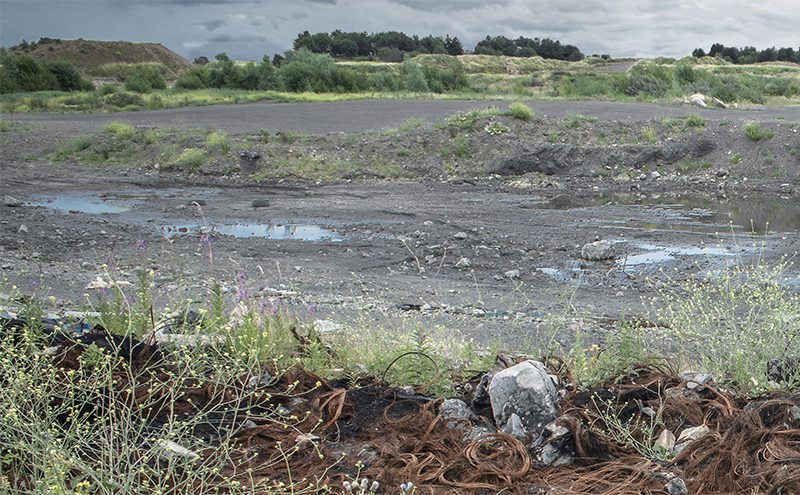James Roper, Infrastructure Segment Manager for GPS PE Pipe Systems, discusses the complexities associated with installing barrier pipes within contaminated land.
With increasingly more brownfield sites being redeveloped to allow a greater volume of housing to be constructed, reliable pipelines are required to transport large volumes of drinking water for new homes. However, with contaminants often present in the ground, there is lots of debate around the best solutions to ensure a safe drinking water supply is maintained.
With the UK government expecting 60% of all new housing developments to be built on brownfield sites by 2021, the resulting increased requirement to convey water supplies has prompted some pipeline manufacturers and suppliers to look for ways to capitalise on this opportunity. GPS PE Pipe Systems is warning of the dangers that can come with installing water pipe that is not proven as safe for use in contaminated land.
Determining contamination risk
When considering pipework materials and systems to use on brownfield sites it is important to determine whether the land is at risk of contamination. UK Water Industry Research (UKWIR) offers guidance in the form of its Guidance for the Selection of Water Supply Pipes to be used in Brownfield Sites published in 2011.
The previous use of the site will provide a good indication of whether contaminants are likely to be present in the ground, but developers will need to undertake costly soil analysis to clarify this. However, when investigating brownfield sites, it is crucial that developers, designers and contractors work closely with the water utilities, as they will ultimately need to approve any pipework material for a new water supply system.
Most water authorities now insist that brownfield sites need to be assessed under the UKWIR method, which includes desktop studies, site walkover and site investigation including multiple soil samples. Utilities will then assess all data provided by the developer or contractor to confirm the pipe material to be used, based on the defined trigger levels in the pipe selection table within the UKWIR document.
It is vital that the correct pipe material is selected as hydrocarbons can permeate standard plastic pipes and pollute drinking water. Hydrocarbons can also damage pipes. Pipe pollution and failure is not only a danger to the public and surrounding environment, but could also result in hefty fines for the water utility, developer and contractor.
Non-permeable to hydrocarbons
The only way to rule out the above hazards is to use a material that is not permeable to hydrocarbons. The Pipe Selection Table included within the UKWIR guidance outlines which pipe materials are safe with which contaminants.
Standard polyethylene (PE) and PVC plastic pipes are not resistant to permeation of many contaminants and should only be used if remediation work has been undertaken to remove all contaminated soil. However, the high cost of the latter, along with associated completion sampling and analysis, would significantly increase project costs.
While wrapped steel, wrapped ductile iron, copper and PE barrier pipe with an aluminium barrier layer (PE-Al-PE) all provide an effective barrier against most contaminants, a PE-Al-PE barrier pipe is the only material tested to the degree that it is known to provide a safe barrier against all known contaminants including inorganic ones.
There is a degree of debate among water authorities, developers and contractors as to whether site investigation and soil analysis is required if a barrier pipe is installed. Although there is no definitive statement on how water authorities should deal with this, UKWIR offers the following guidance: “The UKWIR project steering group have decided that a PE-Al-PE barrier pipe would provide sufficient protection for the supply of drinking water in all brownfield sites. If barrier pipes are specified, there is no need to carry out soil sampling and analysis and this may be the most cost effective solution in some cases. It is therefore reasonable to expect all water companies will accept the use of a barrier pipe in all situations as a blanket approach.”
No need for a site investigation?
While each water authority has its own individual process, the majority do accept PE-Al-PE barrier pipe being installed without a site investigation. However, it is left to the contractor or developer to decide whether a site investigation is preferred, with a pipe selection made based on the findings of the report. There is a strong argument that if the cost of site investigation exceeds the cost of installing a barrier pipe, then specifying barrier pipe for all brownfield sites, regardless of site-specific levels of contamination, would be the most cost effective solution.
With safety the number one priority on brownfield sites, the selection of the most appropriate pipe for the site conditions is vital, but there are other factors to consider for developers and contractors, such as installation techniques and processes, maintenance requirements and the longevity of the system. Whole-life costings have become integral to all companies in the supply chain, with developers under increasing pressure to demonstrate life-cycle cost savings and water utilities slowly but surely moving to a Totex model.
While metal materials do offer a robust barrier against most hydrocarbons, they cannot offer the same installation benefits as PE-Al-PE barrier pipe systems. The lightweight nature of PE pipe, combined with the quicker and easier electrofusion jointing process, saves significant time and costs on site. While the smooth bore of PE resists corrosion, ensuring flow is not restricted over the lifetime of the system, offering optimum operational efficiency over the lifetime of the system.
The simpler and quicker jointing technique offers clear benefits, although the importance of correct installation cannot be underestimated. It’s essential to ensure there are no weak points or leak paths in the system. Every barrier pipe system is different and attending a manufacturer training session can be a good idea if you are unsure.
GPS PE Pipe System’s integrated barrier pipe and fittings system, Protecta-Line has been selected by water authorities, developers and contractors for more than 20 years. It is a cost effective solution, while also offering the only UK produced PE-Al-PE pipe in sizes up to 630mm.
With the government’s prioritisation of brownfield sites, many pipe systems are now promoted for use in contaminated environments. It is important for developers, housebuilders, contractors and utilities to understand what’s involved in selecting the right ones.








